| |
Nepalese Civil War
–
1996/2006
(to present day)
updated at January 2008
|
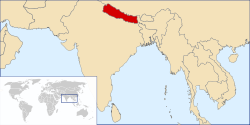
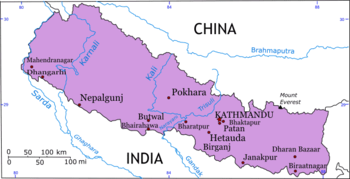
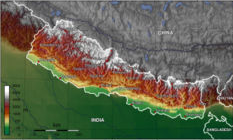

Source ©
Wikipedia |
Nepal, officially known according to its Interim Constitution as the
State of Nepal, is a landlocked Himalayan country in South Asia that
overlaps with East Asia, bordered by Tibet to the north and by India
to the south, east and west. For a small territory, the Nepali
landscape is uncommonly diverse, ranging from the humid Terai in the
south to the lofty Himalayas in the north. Nepal boasts eight of the
world's fourteen highest mountains, including Mount Everest on the
border with China. Kathmandu is the capital and largest city
(3 districts) (pop. 2.2 million est.). The
other main cities include Bhaktapur, Patan, Biratnagar, Bhairahawa,
Birgunj, Janakpur, Pokhara, Nepalgunj, and Mahendranagar. The origin
of the name Nepal is uncertain, but the most popular understanding
is that it is derived from the Newari language, which is called the
Nepal language by the Newari people.
Nepali culture is very similar to the cultures of Tibet and India.
There are similarities in clothing, language and food.
Politics
An interim Parliament was formed on January 15, 2007 after a
comprehensive peace agreement between the ruling Seven-Party
Alliance and the Maoist rebels. Prime Minister and Council
of Ministers chosen through political consensus among the
eight ruling parties on April 1, 2007; role of monarchy
suspended, with future status to be decided by upcoming
Constituent Assembly.
Interim constitution
promulgated on January 15, 2007.
(Source: US Department of State)
Nepal is
divided into 14
zones and 75
districts, grouped into 5
development regions. Each district is
headed by a fixed chief district officer
responsible for maintaining law and order
and coordinating the work of field agencies
of the various government ministries.
The 14 zones are:
|
TYPE OF CONFLICT
Transition after Maoist insurgency for
state control, the so-called
Nepalese Civil War.
Read on
Mao Zedong and
Maoism
FIGHTING FACTIONS FROM 1996 TO 2006
1) Nepali government, led in the last years by
King Gyanendra
and mainly supported
by India and USA.
On April 21, 2006
King Gyanendra gave up his absolute power
in favour of a democratic system.
2) Guerrillas of the Maoist Communist Party of Nepal (CPN or NCP,
Nepalese Communist Party) which is led by Pushpa Kamal Dahal, also
known as
Prachanda (The Fierce), backed by Maoist militia groups
from north-western India.
FIGHTING FACTIONS
AFTER 2006
1) Interim Nepali government.
2) Guerrillas of the
Democratic Terai Liberation Front,
estimated only
150-200 fighters but active from
Saptari to Rautahat districts through its ally the Tarai Tigers.
CASUALTIES
According to IRIN and Reuters, an estimated 12,000 to 13,000
people have died from 1996 to 2006 (over 4,000 killed by Maoists and
8,200 by the government) and an estimated 100,000 to 200,000 people
were internally displaced (Internal Displacement Monitoring Centre).
Read on
internally displaced people
WEAPONS' SUPPLIERS (before 2007)
The government is armed by India, USA and UK. Its troops number
today up to 95,000.
Since 9/11 the Anglo-American coalition has committed millions of
euros in military aid in the name of the "world war against
terrorism". China, Belgium, South Africa, Poland, Russia, Belarus,
Ukraine and France also supply military support to the government.
In 2005, following King Gyanendra’s coup both India and the UK
suspended military aid to Nepal for a brief period of time but later
both countries resumed arms shipments. The US also postponed the
shipment of “lethal arms” to Nepal.
Guerrillas, who emerged in the mid-1990s out of a mix of state
repression and poverty, numbered between about 5000 and 15,000. They
produced their own arms and steal weapons from army barracks. Some
of them were supposed to be trained by other self-declared Maoist
armed groups such as the Naxalists in India and members of Shinning
Path in Peru. It seems they received military assistance also from
Kashmiri separatists and China.
Read on
guerrilla warfare
and
arms industry
HISTORICAL BACKGROUND
One of the world's poorest countries, landlocked
Nepal has been under the sway of an hereditary monarchy or ruling
family for most of its known history, largely isolated from the rest
of the world. With its ancient culture and the Himalayas as a
backdrop, Nepal has long been the destination of choice for
travellers in search of adventure.
Neolithic tools found in the Kathmandu Valley indicate that people
have been living in the Himalayan region for at least 9,000 years.
It appears that people who were probably of Tibeto-Burman ethnicity
lived in Nepal 2,500 years ago.
Indo-Aryan tribes entered the valley around 1500 BC. Around 1000 BC,
small kingdoms and confederations of clans arose. One of the princes
of the Shakya confederation was Siddhartha Gautama (563–483
BC), who renounced his royalty to lead an ascetic life and came to
be known as the Buddha ("the one who has awakened"). By 250 BC, the
region came under the influence of the
Mauryan empire of northern
India, and later became a puppet state under the
Gupta Dynasty in
the 4th century. From the late 5th century, rulers called the Licchavis governed the area. The Licchavi dynasty went into decline
in the late 8th century and was followed by a Newar era, from 879,
although the extent of their control over the entire country is
uncertain. By late 11th century, southern Nepal came under the
influence of the
Chalukya Empire of southern India. Under the Chalukyas, Nepal's religious establishment changed as the kings
patronised Hinduism instead of the Buddhism prevailing at that time.
By the early 13th century, leaders were emerging in Nepal whose
names ended with the Sanskrit suffix malla ("wrestler"). Initially
their reign was marked by upheaval, but the kings consolidated their
power over the next 200 years. By late 14th century much of the
country began to come under a unified rule. This unity was
short-lived: in 1482 the kingdom was carved into three – Kathmandu,
Patan, and Bhadgaon – which had petty rivalry for centuries.
In 1765, the Gorkha ruler
Prithvi Narayan Shah set out to unify the
kingdoms, after first seeking arms and aid from Indian kings and
buying the neutrality of bordering Indian kingdoms. After several
bloody battles and sieges, he managed to unify Nepal three years
later. However, the actual war never took place while conquering the
Kathmandu Valley. In fact, it was during the Indra Jaatra, when all
the valley citizens were celebrating the festival, Prithvi Narayan
Shah with his troops captured the valley, virtually without any
effort. This marked the birth of the modern nation of Nepal. A
dispute and subsequent war with
Tibet over control of mountain
passes forced Nepal to retreat and pay heavy repatriations to China,
who came to Tibet's rescue. Rivalry with the
British East India
Company over the annexation of minor states bordering Nepal
eventually led to the brief but bloody
Anglo-Nepalese War (1815–16),
in which Nepal defended its present day borders but lost its
territories west of the Kali River, including present day Uttarakhand state and several Punjab Hill States of present day
Himachal Pradesh. The
Treaty of Sugauli,
signed on December 2, 1815, also ceded parts of the
Terai and
Sikkim to the Company in exchange for Nepalese autonomy.
Factionalism among the royal family led to instability after the
war. In 1846, a discovered plot to overthrow
Jang Bahadur, a
fast-rising military leader by the reigning queen, led to the Kot
Massacre. Armed clashes between military personnel and
administrators loyal to the queen led to the execution of several
hundred princes and chieftains around the country. Bahadur won and
founded the Rana dynasty, leading to the Rana autocracy. The king
was made a titular figure, and the post of Prime Minister was made
powerful and hereditary. The Ranas were staunchly pro-British, and
assisted the British during the
Indian Rebellion of 1857, and later
in both World Wars. In 1923 the United Kingdom, ruled by
King
George V of Windsor,
formally signed with Nepal, ruled by
King Tribhuvan Bir Bikram Shah, an agreement of friendship, in which Nepal's
independence was recognised by the UK.
BACKGROUND TO THE CIVIL WAR
(Read on
civil war,
communism and
democracy)
In the late 1940s, emerging pro-democracy movements and political
parties in Nepal were critical of the Rana autocracy and the
hereditary rule by a small elite at the top of Nepal’s complex
ethnic and caste-based social hierarchy. Meanwhile, Maoist China occupied
Tibet in 1950, making India keen on stability in Nepal, to avoid an
expansive military campaign.
On April 29, 1949, the
Communist Party of Nepal (CPN)
was founded in Calcutta, India. CPN was formed to struggle against the autocratic
Rana regime, feudalism and imperialism. The founding general
secretary was
Pushpa Lal Shrestha.
CPN played an important role in 1951 uprising that overthrew the
Rana regime and India sponsored Tribhuvan as
Nepal's new king. A new government was appointed, mostly comprising
the Nepali Congress Party. After years of power wrangling between
the king and the government, the democratic experiment was dissolved
in 1959, and a "partyless"
Panchayat system was made to govern
Nepal.
In ancient times, a Panchayat was a Nepalese public assembly,
ideally comprised of the five (pancha) most
important caste or occupational groups in the village. A
pancha is a member of a panchayat. From 1962
until the 1990 constitution took effect, assemblies modeled on this
ancient system formed the backbone of political structure in Nepal,
at the village and district levels, and at the top in the National
Panchayat, or Rashtriya Panchayat.
In 1989,
the "Jan Andolan" (People's) pro-democracy Movement was
marked by a unity between the various political parties. Not only
did various Communist parties group together in the
United Left Front, but they also cooperated with parties such as
Nepali Congress. One result of this unity was the formation of
the
Communist Party of Nepal (Unified Marxist-Leninist). Jan Andolan
eliminated the Panchayat system and forced
King Birendra Bir Bikram Shah Dev, ruling
the
absolute monarchy of Nepal since 1972, to accept
large-scale political reforms by creating a
parliamentary monarchy,
with the king as the head of state and a prime minister as the head
of the government. A
multiparty
system was established in Nepali parliament in May
1991.
Expectations of increased
human rights protections, stability and
development came with the new political system. The King, formerly
an absolute monarch, legalized political parties, after which an
interim government promulgated a new
Constitution by which the King
was retaining important residual powers, but dissociated himself
from direct day to day government activities. The democratically
elected Parliament consisted of the House of Representatives (lower
house) and the National Council (upper house).
Despite some improvements, however, there was little progress in
bringing existing legal and administrative provisions fully in line
with international standards and principles enshrined in the
constitution which set up a parliamentary constitutional monarchy.
In 1994, the
Communist Party of Nepal (Maoist) was founded
and led by Pushpa Kamal Dahal, otherwise known as
Prachanda.
The CPN-M was formed following a split in the
Communist Party of Nepal (Unity Centre) and it used the name "CPN
(Unity Centre)" until 1995.
On February 13, 1996, the
CPN-M alienated from
mainstream political parties and started a guerrilla war in the
Midwestern region of the country, the “People’s war”, against both
monarchy and mainstream political parties, with the main goal of
overthrowing feudal institutions, including the monarchy, and
establishing a Maoist state.
The rebels were made up of former members of the
1949 Communist Party of Nepal. They were referred to as Maoists
because they claimed an ideological legacy from the Chinese
Revolutionary leader Mao Zedong.
The Maoists' main demand was an end to the monarchy.
They also wanted the expulsion of all Indian influence and an end to
discrimination based on the Hindu caste system, ethnicity and
gender.
Underdevelopment in areas outside the capital, particularly the
mountainous western regions, has fuelled support for the rebels
among the poor, who blame the government for failing to address the
country's gross inequalities.
The districts in which the Maoists hold sway were among the most
inaccessible and impoverished in Nepal. Maoists recruited fighters
in the rural poor and illiterate base and train them in working
camps. But in general, a wide range
of people who face bleak economic prospects, high unemployment rates
and inadequate education and healthcare facilities turned in hope to
the Maoists' cause.
The upsurge in violence hurt Nepal's economy and
deepened political instability.
In 2000, insurgency spread to at least 35
of Nepal’s 75 districts and grave human rights violations
continued, committed both by the Nepalese police force and the CPN-M.
Nepal's stability was threatened even more when King Birendra and
most of his family were massacred at a
royal dinner on 1 June 2001. His eldest son and heir,
Dipendra, was apparently the gunman, in response to his parents'
rejection of his choice of wife. He himself died a few days later of
gunshot wounds suffered during the massacre. Birendra's brother,
Gyanendra
Bir Bikram Shah Dev, then became king.
Following the massacre of the royal family, violence escalated and
the government brought in the army in addition to national police
forces to fight the rebels. On the pretext of quashing the
insurgents, the King Gyanendra closed down the parliament and sacked
the elected prime minister in 2002 and started ruling through prime
ministers appointed by him.
He enhanced military action against guerrillas. CPN-M took under
control about two thirds of the Country. Either government
repression against rebels and those suspected of supporting them,
and Maoist attacks against politicians went on. The new round of
violence prompted the use of the army against the rebels for the
first time. In late July, the newly-elected Prime Minister
Sher
Bahadur Deuba ordered an army
ceasefire and called for dialogue with
the rebels. The rebels agreed to peace talks in August but, by
November, had broken the ceasefire and walked out on the talks.
In 2002 fighting escalated dramatically as government and rebel
forces launched frequent attacks which killed over 4,600 people,
many of them civilians. About 50,000 Royal Nepal Army soldiers -
some equipped with American-made M16s, others with Belgian FNFAL. 762 mm rifles – were opposing the Maoists, numbering between 5,000
and 15,000, widely dispersed in small groups.
Prime Minister Deuba was in turn removed by King Gyanendra, in
October 2002, He dissolved Parliament and called for elections.
In 2003 a
ceasefire between the government and Maoist rebels held for the
first eight months of the year, leading to a decline in
conflict-related deaths. However,
due in part to the continued suspension of the
democratically-elected government, the rebels withdrew from the
ceasefire in August and both sides resumed fighting, resulting in
the death of approximately 1,000 soldiers, rebels and civilians in
less than five months.
The Maoist rebellion had traditionally been
concentrated in the four western districts of Rukum, Rolpa, Salyan
and Jajarkot; however, in 2003 the rebels were active in 72 of
Nepal’s 75 administrative districts.
Heavily criticized for human rights abuses, the Maoists were said to
have imposed an increasingly authoritarian regime on many parts of
rural Nepal, regularly abducting civilians and often forcing at
least one person from each family to join them.
In 2004
mass strikes, riots, kidnappings, blockades, terrorist bombings and
major clashes between Maoist rebels and government security forces
contributed to the conflict, resulting in thousands of deaths.
Thousands more were injured and hundreds of thousands remained
displaced.
A government ambush of Maoists in March involved thousands of
soldiers and resulted in hundreds of deaths. Rebels blockaded the
capital of Kathmandu several times including a major blockade that
almost entirely halted the flow of goods and people in and out of
the city for several days. The King of Nepal controlled the
government while opposition parties and donor agencies pushed for
the restoration of democracy.
Maoist attacks on development and infrastructure projects resulted
in millions of dollars in damages. Several big businesses in Nepal
shut after facing threats from the rebels. Nepali royal family and
American and Indian investors had stakes in some of the businesses
targeted by the rebels, so India was also worried at increasing
rebel attacks on Indian businesses in Nepal.
Nepal Prime Minister Deuba seeked Indian understanding, cooperation
and assistance in tackling the deadly Maoist insurgency, called by
him “terrorism”.
In the past, India had supplied Nepal with helicopters, trucks as
well as arms and ammunition. Deuba also asked India to stop the
Maoists from using Indian territory for shelter, training and
supplies.
RECENT STATUS OF FIGHTING
In 2005,
intense fighting between Maoist rebels and government troops
throughout the year resulted in over 1,500 deaths on both sides.
Human rights violations and the use of child soldiers by the rebels
and the government continued. Thousands of people were arrested in a
year-long crackdown by the government. On February 1, 2005,
the King
unilaterally declared a
state of
emergency, took over all executive powers of the government to
establish an absolute monarchy, being in firm control of the
military. He enforced martial law and argued that civil politicians
were unfit to handle the Maoist insurgency. Telephone lines were cut
and several high-profile political leaders were detained. Other
opposition leaders fled to India and regrouped there. A broad
alliance against the royal takeover called the
Seven Party Alliance
(SPA) was organized, encompassing about 90% of the seats in the old,
dissolved parliament.
At the time, the government security forces consisted of the Armed
Police Force and the Royal Nepalese Army, both having been heavily
criticized for their alleged disregard for human rights. In three
years the Royal Nepalese Army had nearly doubled its strength from
roughly 45,000 troops to 80,000.
Violent local militias armed by
the government were increasingly involved in violent attacks on
suspected rebels and suspected sympathizers, while rebels controlled
much of the countryside. Senior military officers said there were
between 2,000 and 4,000 well-trained Maoist fighters, known as the
movement's ‘hard core’. Another 12,000-14,000 so called ‘militia’
fight alongside them. In July 2006, a Maoist commander was quoted in
local media as saying there were 36,000 fighters.
Though the rebels were active in 72 of Nepal’s 75 administrative
districts, according to diplomats, they did not threaten the
survival of the government, which was always controlling the major
towns and cities.
In September 2005,
fighting decreased following a four-month unilateral ceasefire
declaration by the CPN-M which was not reciprocated by the royal
government.
On November 22, 2005, a joint CPN-M / SPA conference in
Delhi, India, issued a 12-point understanding in
opposition to the monarchy. Within the framework of that
understanding, Maoists committed themselves to multiparty democracy
and freedom of speech. SPA, for their part, accepted the Maoist
demand for elections to a Constituent Assembly. Maoist and SPA
together arranged a mass uprising against the reign of King Gyanendra. Frustrated by lack of security, jobs and good governance,
thousands of people took to the streets to demand that the king
renounce power outright, but the royal government turned even more
ferocious and continued its suppression including daytime curfews
amid a Maoist blockade. Thousands were injured and 21 people died in
the uprising. Food shortages took effect. The security forces turned
brutal while foreign pressure continued to increase on King
Gyanendra to surrender power.
These
political agitations against the rule
of King Gyanendra were called
Loktantra
Andolan (Democracy Movement), also sometimes referred
to as Jana Andolan-II (People's Movement-II), implying it
being a continuation of the 1990 Jana Andolan.
At the beginning of 2006,
the situation became yet more tense as SPA launched agitation
programmes around the country. On January 16, a night curfew was
imposed in the capital, Kathmandu, to avoid demonstrations and
strikes against the king. The police fired at protestors, and
arrested many of them, including leaders of the opposition. The agitations reached a peak
around the February 8 municipal elections, which were boycotted by
the SPA and the Maoists. In total, official figures claimed a
participation of about 21% but opposition sources questioned those
claims.
SPA called for a four-day nationwide general strike between April
5-9, 2006. The Maoists called for a cease-fire in the Kathmandu valley.
The general strike saw numerous protests. A curfew was announced by
the government on April 8, with reported orders to shoot protestors
on sight. Despite this, small, disorganized protests continued.
On April 9, SPA announced that it intended to continue its protests
indefinitely and called for a tax boycott. The government announced
plans to step up its enforcement of the curfew and claimed that the
Maoists had infiltrated the protests. Prachanda, the leader of the
CPN, had said that "this is no longer a protest by opposition
parties ... it has become a people's movement," and warned that he
himself could lead a revolt in the capital.
For four weeks,
large pro-democracy demonstrations,
general strikes and rebel blockades shut down the capital Kathmandu
on multiple occasions.
Clashes between security forces and thousands of
anti-royalists occurred on a daily basis, with crowds increasing to
sizes estimated at 100,000 to 200,000 in Kathmandu in various
estimates, more than 10% of the city population. At least 16 people
were shot dead, dozens were injured, and hundreds were arrested. Any
offers for talks by King Gyanendra were rejected.
On April 21, 2006, a crowd
extimated from 300,000 to about half a million took part in the
protests in Kathmandu.
Later the same evening,
King Gyanendra announced that he was giving up absolute power and
that "Power was being returned to the People". He
appointed former Prime Minister
Girija Prasad Koirala of the Nepali
Congress Party prime minister once more . Both the U.S. and India
immediately called on the SPA to accept this new situation.
Koirala formed a coalition called the People’s Government and
annulled all appointments made by King Gyanendra since October 2002,
with the intention to hold elections as soon as possible.
Many Nepalese
protesters, however, still carried out rallies in numerous cities.
Maoists stated that merely restoring the parliament was not going to
resolve the problems and that the rebels planned to continue
fighting against government forces until they would achieve the
formation of a Constituent Assembly and the complete abolition of
the monarchy. The SPA felt the pressure of these protests as some
took place directly outside the deliberations of Gyanendra's offer.
Finally after 19 days of tumultuous protests, on April 24 midnight,
the King
reinstated
the old
Nepal House of Representatives
and
called it to reassemble on April
28. Then Maoists
agreed to new Prime Minister Koirala’s appeal to lift city blockades
and few days later a truce offered by the government came into
force. On June 13, the government began releasing rebels detained
under the antiterrorist law introduced in 1998.
The most dramatic move of the new government came on May 18, 2006
when the newly resumed House of Representatives unanimously used its
newly acquired sovereign authority to curtail the power of the king
and declared Nepal a secular state. Parliament stripped the king of
his power over the military, abolished his title as the descendent
of a Hindu God, and required royalty to pay taxes. Furthermore,
several royal officials have been indicted, and the Nepalese
government is no longer referred to as "His Majesty's Government",
but rather as the "Government of Nepal". An election of the
constituent assembly to rewrite the constitution was declared
unanimously to be held in the near future, with the possible
abolition of the monarchy as part of constitutional change.
The bill included:
Putting 90,000 troops in the hands of the parliament
Placing a tax on the royal family and its assets
Ending the Raj Parishad, a royal advisory council
Eliminating royal references from army and government titles
Declaring Nepal a secular country, not a Hindu Kingdom
Scrapping the king's position as
the supreme commander of the Army
The act overrides the 1990 Constitution, written up following the
Jana Andolan and has been described as a Nepalese Magna Carta.
According to Prime Minister Koirala, "This proclamation represents
the feelings of all the people."
May 18 has already been named Loktantrik Day (Democracy Day) by
some.
Following Gyanendra's relinquishing of absolute power, the Nepalese
government and CPN-M rebels agreed on a ceasefire.
In August 2006,
both parties came to an agreement on the issue of arms
accountability: the rebels and their arms were to be confined to
camps while government troops would be stationed in their barracks.
The U.N. was requested to monitor both.
The UN Secretary-General decided
to appoint Ian
Martin ( United Kingdom) as his Personal Representative in Nepal
for support to the peace process.
A lasting peace finally seemed within reach in early November when
the two sides resolved the thorny issue of what the rebels would do
with their weapons.
Under the pact, the Maoists agreed to put their arms under U.N.
supervision, clearing a key hurdle for the guerrillas to join the
interim government.
On November 21, 2006, peace talks ended with the signing of
the Comprehensive Peace Accord (CPA) between Prime Minister
Koirala and Maoist leader Prachanda.
This formally ended the Nepalese Civil War, which claimed more than
13,000 lives and displaced hundreds of thousands of people to avoid
violence and abuse. At least 900 people disappeared after they were
detained by the security forces while the CPN-M is responsible for
several hundreds of killings, abductions and torture of people seen
as opposed to their cause.
On January 14, 2007, SPA and CPN-M served together in an
interim legislature under the new Interim Constitution of Nepal
awaiting elections in June 2007 to a Constituent Assembly, while all
the powers of the Nepali King were in
abeyance.
The new 330-seat
parliament was sworn-in.
The Maoists made up the second-biggest party in the new body with 83
seats.
The deal was widely viewed as a victory for peace and democracy in
one of the world's poorest countries. Analysts said their entry into
their parliamentary system signalled their commitment to abandon
their insurgency and participate in democratic politics.
Following
the Comprehensive Peace Agreement, the
United Nations received a
request for assistance,
and established the political mission United Nations Mission in
Nepal (UNMIN) on 23
January 2007, to monitor the disarmament of Maoist rebels and sent
an
advance group of up to 35 military monitors and a team of up to 25
election experts to help with the 2007 poll for
Constituent Assembly elections in 2007.
Later the UNMIN included a team
of 186 military monitors.
STATUS OF FIGHTING AT PRESENT
DAY
An outbreak of violence in January 2007 cast a shadow over the peace process, as the
Madhesi
(or Madhesay)
movement in the
southern plains region called
Terai demanded to end discrimination against
the ethnic Madhesi people.
Violent protests
erupted at which Madhesi
protestors called for greater representation in government and the
peace process. Clashes between police and demonstrators
and attacks on government facilities in at least 10 districts
resulted in the death of over 30 people and some towns were put under curfew.
A Nepali
minister from the ethnic Madhesi community resigned, accusing the
ruling alliance of neglecting Madhesi grievances. Madhesi leaders
were angry after parliament passed the Interim Constitution that did
not meet their demands for federalism and proportional
representation.
They warned that, if the unrest continued, the military might
intervene and wider communal conflict could break out, threatening
the peace process. Aid agencies said the clashes and curfews were
stopping people accessing health services, and called on those
involved to allow humanitarian workers to operate freely.
Jwala Singh (real name Nagendra Paswan), leader of
the breakaway
Democratic Terai Liberation Front
(in Nepali language Janatantrik Terai Mukti
Morcha or JTMM), said he was ready
for talks with the government. He also demanded
the Madhesi to be allowed to run themselves the army,
police and the local administration
of Nepal's fertile southern plains bordering India.
Prime Minister Koirala, in an address to the nation on February
7, 2007, promised to amend the constitution to meet the demands
of the Terai people.
The Madhesi, roughly a third of Nepal's population, are ethnically and culturally closer to people from
neighbouring Indian states than Nepalis from the hills and say they
are discriminated against in parliament and the security forces,
having always been largely excluded from political power and
representation.
They live in a fertile border strip, and are the ethnic majority in
the area, which is home to almost half the country's population of
26 million.
Read a History of Terai in on
Madhesi Wordpress, from a Madhesi point of view.
Janatantrik Terai Mukti Morcha
was a revolutionary organisation in Nepal. It was formed in 2004 by
former Maoist Leader
Jay Krishna Goit as a split
from the CPN-M. The group accused the CPN-M of not guaranteeing the
autonomy of the Terai region. In August 2005, several of its leading
members were killed in fight with the CPN-M. In July 2006, it was
accused of killing two CPN-M members in a gunfight . The CPN-M
followed this incident by declaring an armed war with the group,
claiming that they had ignored calls for peace talks and that there
were royalist elements in the JTMM.
Clashes among pro-royalists, Maoist former rebels, Madhesi People's
Rights Forum for regional autonomy and other parties broke out in
the first part of 2007, showing how long was the way for
democracy to take root in Nepal. Scores of people died in the region
in violence by ethnic Madhesi groups indicating that an agreement
between the government and the main Madhesi group would not end the
unrest in the region unless other rebel groups were also brought
into the mainstream.
Mr Ian Martin, U.N. Secretary-General's representative to the Nepal's peace
process, warned that the violence could also delay elections due to
be held in June 2007 for a special assembly tasked with drafting a
new constitution and deciding on the monarchy's future.
U.N. human rights monitors also hoped to promote a criminal justice
system that would be accessible to all, including lower castes,
women, survivors of sexual violence and the rural poor. But little
progress has been made on how to deal with crimes perpetrated during
the conflict.
Another key unanswered question is the role - if any - of the
monarchy in the future political landscape. The Maoists have
softened their demand for its abolition, saying they will accept the
decision of the Nepalese people. Washington and other Western
governments backed away from their previous support for the king
after he became increasingly autocratic, indicating that he should
play little more than a ceremonial role.
The return to multi-party democracy may not produce a stable
government.
On April 1, 2007, a new
eight-party government was sworn in, with five ministers from CPN-M.
The Maoists were placed in charge of the ministries of information,
local development, planning and works, forestry, and women and
children. But on September 18, 2007, the CPN-M ministers
resigned from the government due to the rejection of its demands,
which included the declaration of a republic prior to the
Constituent Assembly election planned for November and an electoral
system of proportional representation.
On September 30, 2007,
three
near-simultaneous bomb blasts killed two women and wounded 26 people
in Kathmandu. It was the first attack in the Nepali capital since
the end of the Maoist revolt. The Terai Army,
one of several ethnic Madhesi rebel groups, as well as the
previously unheard of Terai Utthan Sangat, claimed responsibility
for the attacks in calls to local media. The claims could not be
verified independently.
On November 20, 2007, figures compiled by the NGO
HimRights
show that a total of 82 persons were killed by rebel groups, Maoists
and state forces in the 10 districts of the eastern and central
Terai over a five-month period. Amnesty International
expressed concern over the indefinite postponement of the elections
to a Constituent Assembly (CA) which will write a new constitution
and confirm the country as a republic after centuries of royal rule.
As a result of the international pressure, Nepal's government set 10
April 2008 as the date for the elections.
In the meanwhile, human Rights
violations, killing, abduction, kidnap for ransom and vandalizing
activities were observed throughout the country, but especially in
the eastern part of Terai, making the whole region unstable. Some of
the armed groups to function in the region were JTTM (G), JTTM (JS),
Madhesi Tiger, Terai Army and various other unidentified groups.
Even though the functioning armed groups were claiming their
activity for liberation and rights of the Madhesis, the nature of
their work was considered criminal.
Even cadres of Maoists (YCL) continued their acts of abduction,
torture and vandalisation.
In February 2008 at least
two people were killed and hundreds injured in clashes with police
during a strike that closed roads, factories, schools and shops in
the Terai and hindered supplies of fuel travelling from India to the
hills. As the strike didn't stop, Nepal's government agreed to
give autonomy to its southern plains and other regions after the
forthcoming national election.
HUMAN RIGHTS
Human rights violations by both the government security forces and
CPN-M members have been reported during the conflict on a daily basis in 27 of 75
districts. The Maoist insurrection has been waged through torture,
killings, and bombings involving civilians and public officials.
The rebels used guerrilla tactics such as ambushes and bombing.
According to the Ban Landmine Campaign Nepal, both the army and the
Maoists have been using landmines, which have victimised civilians
more than the combatants.
Both the rebels and security forces targeted civilians; the rebels
attacking those deemed “enemies of the people”, including
politicians and teachers, and government forces targeting those
perceived to be supportive of the Maoist cause.
A government initiative to create
civil defence groups to fight the Maoists threatened to further draw
the civilian population into the conflict.
Aside from civilian casualties, the conflict also
produced a significant number of both internally and externally
displaced persons.
During the second half of 2003,
media reported some 200,000 displaced in urban areas across the
country with 100,000 IDPs (Internally Displaced People) in Kathmandu
alone.
If one includes those who have fled to India, the
total number of people displaced, directly or indirectly, by the
conflict could grow to as many as two million people.
IDPs include former land-owners, political party members and
families who have left their villages in search of work after the
war destroyed their livelihoods.
According to the United Nations,
some highland villages have lost up to 80 percent of their
population with only vulnerable groups, such as the elderly, left
behind.
Nepal is also home to refugees from other countries. The U.N.
refugee body, UNHCR, says about 105,000 Nepali-speaking Bhutanese
refugees live in camps in Nepal, having been stripped of their
nationality and expelled from Bhutan in the early 1990s.
There are also about 20,000 Tibetan refugees.
Both the CPN-M and the Royal Nepalese Army have involved
children as young as 14, including girls.
CWIN (Child Workers in Nepal Concerned Centre) estimated that 405
children under 18, including 115 girls, have been killed in the
conflict so far.
UNICEF has also received reports
of Maoists using children as cooks and porters near the frontline.
On a trip to the Maoist heartland in 2005, a Reuters team saw
children scarcely older than 10 lugging rifles, members of a Maoist
militia.
According to UNICEF, thousands of children remain
missing.
The conflict has severely disrupted the education system, UNICEF
said. Maoists have killed and threatened
teachers, and kidnapped thousands of school-children.
The fighting has also hampered the government's ability to deliver
even basic healthcare. Half of all children under the age of five
are underweight, according to the U.N. Development Programme.
NEPAL'S CONSTITUTIONAL PROCESS
Nepal’s constitution-making process must conclusively end
the conflict and also shape more representative and responsive state
structures.
But
political leaders must make the constitutional
process more inclusive or risk a return to violent conflict.
The major challenge is to maintain leadership-level consensus while
building a broad-based and inclusive process that limits room for
spoilers and ensures long-term popular legitimacy. So far, the
concentration has been on building elite consensus at the expense of
intense political debate and extensive public consultation.
Recent violent protests show that providing constructive means to
channel popular demands into political debate is not an abstract
consideration but an urgent practical imperative.
The new constitution’s drafting process must address the twin
objectives of peace-building and long-term political reform. The
interim constitution of 15 January 2007 established a framework for
constitutional change – through an elected constituent assembly –
and enshrined the guiding principles agreed in earlier negotiations.
Mainstream political parties will remain key actors, especially if
they seize this opportunity to increase their inclusiveness, promote
internal democracy and tackle the worst excesses of corruption and
patronage. The Maoists were a driving force for a constituent
assembly, but they now have to translate the achievement of this
goal into votes and prove that their movement can adapt itself to
democratic rules. Other political parties, civil society and the
international community should maintain pressure on them to keep
their promise to abandon violence.
Even a successful constitutional assembly, which should be elected
at the end of 2007, cannot in itself resolve
the social and political conflicts that fuelled the Maoist CPN
insurgency. In facts, although the 10-year civil conflict has ended,
there are widespread law and order problems, many of them political.
However, the constitution-making process is an opportunity both to
reshape the state and encourage reform of the political parties that
will have to consolidate democracy and prevent a return to violent
conflict.
DEVELOPMENT OF THE COUNTRY
In May 2006, Dutch development agency SNV and French
NGO Action Contre la Faim warned of a growing food crisis in remote
districts of impoverished Karnali province in the northwest, caused
by a severe drought.
Development experts told a December 2005 workshop hosted by the
United Nations Development Programme (UNDP) and the Nepal Press
Institute that, while Nepal was on track to half the number of
people living below the poverty line from 42 percent in 1990 to 21
percent in 2015, its progress was fragile.
According to the United Nations, the conflict cut the growth rate to
2 percent in 2004-05, but the return to peace - if it lasts - could
help boost tourism and wider economic growth.
Tackling growing inequalities between social groups is seen as a key
challenge for the development community in Nepal. Dr Yubaraj
Khatiwada, Executive Director of the Nepal Rasta Bank, told the UNDP
seminar: "Unless we look at inequality, social conflict may remain
forever, even though the armed conflict may end."
With regard to the Millennium Development Goals, the United Nations
has said Nepal is likely to meet targets for cutting infant death
rates and increasing access to safe drinking water, but could miss
targets on education and stemming the spread of HIV/AIDS.
In May 2007, a senior finance ministry official said the country would
need around $1.2 billion for post-conflict reconstruction, and
appealed to the international community for help. According to
figures from the Organisation for Economic Co-operation and
Development, Nepal received $427 million in overseas aid in 2004 -
60 percent of which was earmarked for education, health and other
social sectors.
Population pressure on natural resources is increasing.
Overpopulation is already straining the "carrying capacity" of the
middle hill areas, particularly the Kathmandu Valley, resulting in
the depletion of forest cover for crops, fuel and fodder, and
contributing to erosion and flooding. Additionally, water supplies
within the Kathmandu Valley are not considered safe for consumption,
and disease outbreaks are not uncommon. Progress has been achieved
in education, health, and infrastructure. A countrywide primary
education system is under development, and Tribhuvan University has
several campuses. Although eradication efforts continue, malaria has
been controlled in the fertile but previously uninhabitable Terai
region in the south. Kathmandu is linked to India and nearby hill
regions by an expanding highway network.
On January 2008,
the state-owned Nepal Oil Corporation (NOC), which has a monopoly
over oil imports, had increased kerosene, cooking gas and diesel
prices by up to 20 percent. It was the second price rise since
October. Nepal buys about 800,000 tonnes of oil annually, accounting
for about 10 percent of its energy needs, but it faced shortages
because of lack of money to pay for imports. NOC needed to raise the
prices to cut its losses and attempt to minimise fuel shortages, but
even to help pay bills worth millions of dollars to India's
state-run Indian Oil Corporation (IOC), the sole supplier of oil to
Nepal.
The move was greeted with nationwide protests from student activists
which caused two days of disruption across the country. In Kathmandu,
protesters had blocked many roads and blackened the sky by burning
logs and tyres, till NOC withdraw the increase.
LOCAL e-news
Kantipur
SOURCES
Alertnet
Amnesty International
BBCnews
CIA The World Factbook
HIIK - Heidelberg Institute for International Conflict Research
HimRights - Himalayan Human Rights Monitors
ICG - International Crisis Group
IRIN - Integrated Regional Information Networks
PeaceReporter
Project Ploughshares
Reuters
UNDP - United Nations Development Programme
US Department of State
Warnews
Wikipedia
up
 |

Nepal has a total population of
28,901,790 as of
July 2007, with a
growth rate of 2.13%.
Ethnic groups
2001 census:
Chhettri 15.5%
Brahman-Hill 12.5%
Magar 7%
Tharu 6.6%
Tamang 5.5%
Newar 5.4%
Kami 3.9%
Yadav 3.9%
other 32.7%
unspecified 2.8%
Nepali is the
official language with 47.8% of the population speaking it as their first
language.
Religions
2001 census: Hindus 80.6%
Buddhists 10.7%
Muslims 4.2
Kirant 3.6
other religions 0.9%.
Life expectancy
is 60.56 years. 62% of the population is up to 14 years old,
being the median age less than 21.
Nepal is the only country in the world
where males outlive females.
Total
literacy rate
(2001 census) is 48.6% (62.7% for males and
34.9% for females).
Demographic data from 2007 CIA World Factbook
Economy: Nepal is among the poorest and least developed
countries in the world with almost one-third of its population
living below the poverty line.
(CIA)
GDP (PPP)(2006 est.)(CIA)
- Total $41.18 billion
-
Per capita
$1,500
- Grow rate
1.9%
Gini coefficient 37.7-47.2 (high)(CIA 2004/05-UN 2003/04)
HDI
0.527 (138th) (UNDP 2006)
Poverty
68.5% of the population live on less than $2 per day
(UNDP 2006)
30.9% of the population live below national poverty line (UNDP 2006)
Unemploy-ment rate
42% (2004 est.)(CIA)
Child labour
31% (5-14 year olds) (1999-2004) (UNICEF)
Under-five mortality rate
76‰ (UNDP 2006)
Military ex-penditures
1.6% of GDP (2006)(CIA)
Nepal's military consists of the nearly 95,000-strong Nepalese Army
(NA), which is organized into six divisions (Far-Western,
Mid-Western, Western, Central, Eastern, and Valley Divisions) with
separate Aviation, Parachute, and Security Brigades as well as
brigade-sized directorates encompa-ssing air defense, artillery,
engineers, logistics, and signals which provide general support to
the NA. The Prime Minister is the Supreme Commander of the NA.
(US Dep of State)
Sources
CIA Factbook
UNICEF
UNDP
US Dep State
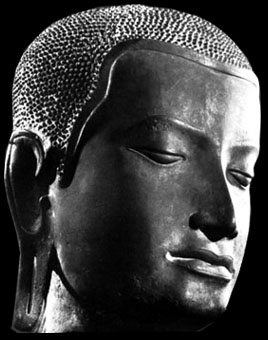


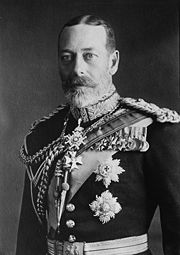
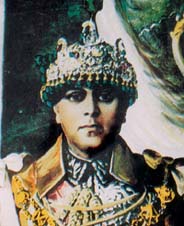
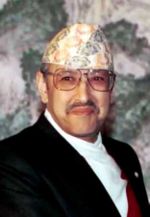
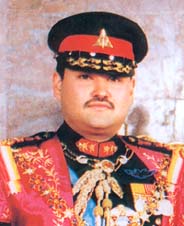


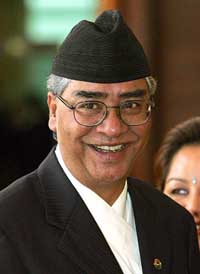
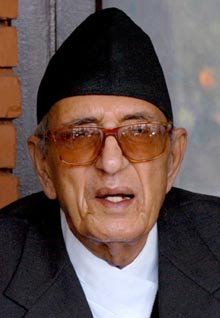
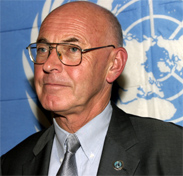

 |

















